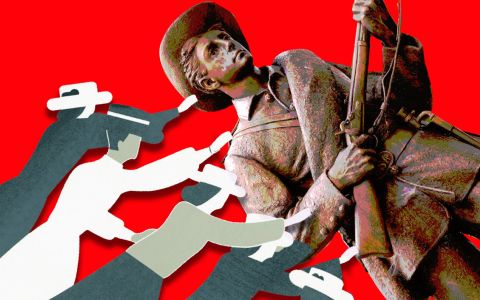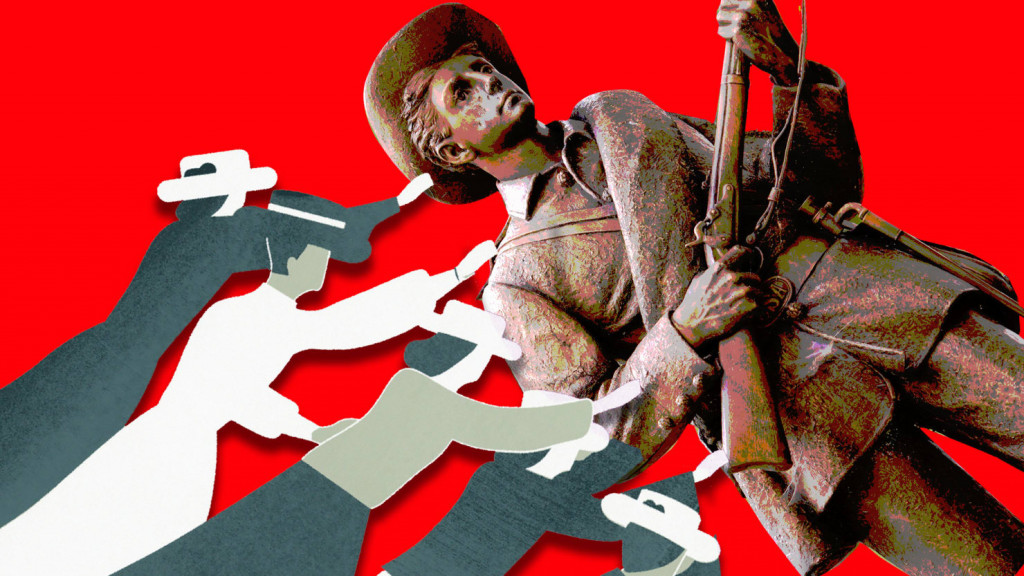If you look at photos of the Charlottesville Unite the Right rally, the participants are entirely white and almost exclusively male.
While the so-called alt-right make rape threats to women and insult their enemies by attacking their masculinity, their adoption of Confederate culture would not be possible without a group of Southern women who bucked gender roles and installed many of the monuments that white supremacists have rallied around.
“In the early 20th century it was all about women doing this stuff. This century it’s about men being these defenders of Confederate heritage. It’s much more angry and violent,” said Southern historian Karen Cox and author of Dixie’s Daughters: The United Daughters of the Confederacy and the Preservation of Confederate Culture.
A group of mostly Southern elite women founded the United Daughters of the Confederacy (UDC) in 1894, 30 years after the end of the Civil War. The group was comprised of the wives and daughters of Confederate soldiers many of whom worked during the war providing medical supplies, making bullets, and more according to Cox.
“The Civil War disrupted everything and it disrupted gender roles,” said Cox. “Before the war it would have been, ‘women are keepers of the faith and keepers of the hearth and home.’” The war gave women an opportunity for greater responsibility that continued after the men returned, and women of influence moved into their new role as preservationists of Confederate identity. They installed monuments to Confederate heroes like Robert E. Lee and Jefferson Davis, lobbied for pensions for veterans and wrote children’s books to teach Southern history.
While men’s groups like United Confederate Veterans and Sons of Confederate Veterans did exist, Cox said that the men seemed less inclined to help.
“There were women who would complain that the Sons weren’t doing their part. They’d get mad at them and call them out,” said Cox.
That’s not to say that men did not contribute at all to the memorialization of the South. These women came from influential families and married powerful men who provided them with important connections, said Cox. However, the UDC uniquely pushed for the rehabilitation of the South’s image.
One important part of the UDC was to instill reverence for the Confederacy in future generations.
“They would say we want to build living monuments and living monuments are the children who grow up to be defenders of states rights and also believe in the same kinds of history that they do,” said Cox.
The UDC closely monitored textbooks and advocated for history lessons that downplayed the suffering of slaves in the South, historian Kevin Levin wrotefor The Daily Beast last year. They falsely claimed that the Civil War was not fought over slavery but rather “states’ rights” and one popular textbook from 1895 taught that the Ku Klux Klan was necessary to protect whites. The UDC continues to offer academic scholarships.
At the height of the UDC’s popularity at the beginning of World War I, the group had more than 100,000 members with chapters not only in the South but across the entire United States and even abroad. Cox said that the group is less than one-fifth that size today.
Now, white nationalists from across the country have co-opted the stories and the symbols created by the UDC for their cause, said Cox. She said that she wouldn’t be surprised if many of the men protesting the removal of Confederate statues aren’t related to Confederate soldiers.
“It’s not about the Confederate heritage, it’s about white heritage that’s where these people are coming from,” Cox said.
The United Daughters of the Confederacy distanced themselves from the alt-right’s use of Confederate imagery in a statement posted to their website a week after Charlottesville.
“We are grieved that certain hate groups have taken the Confederate flag and other symbols as their own,” wrote Patricia Bryson, President General of the UDC. “Our members are the ones who, like our statues, have stayed quietly in the background, never engaging in public controversy.”
However, Cox said that the Confederacy has always stood for white supremacy. It’s not surprising that their ideology and symbols would spread as white nationalists become more vocal.
The internet plays a large both in the growth of white supremacy and its gender shift, said writer and alt-right researcher Matthew Lyons. White supremacist Richard Spencer began to use the phrase “alternative right” to refer to fringe right-wingers who did not align themselves with establishment conservatism, wrote Lyons in his report, CTRL-ALT-DELETE: The Origins and Ideology of the Alternative Right. The group then moved onto online chat boards in 2015 where it attracted communities of men already known for attacking women with violent and graphic sexual threats.
“I’m sure there are [women] who are supportive but who are not speaking out, which is keeping in the alt-right’s notion of the women’s appropriate role which is they should be silent helpers,” said Lyons.
–thedailybeast.com




